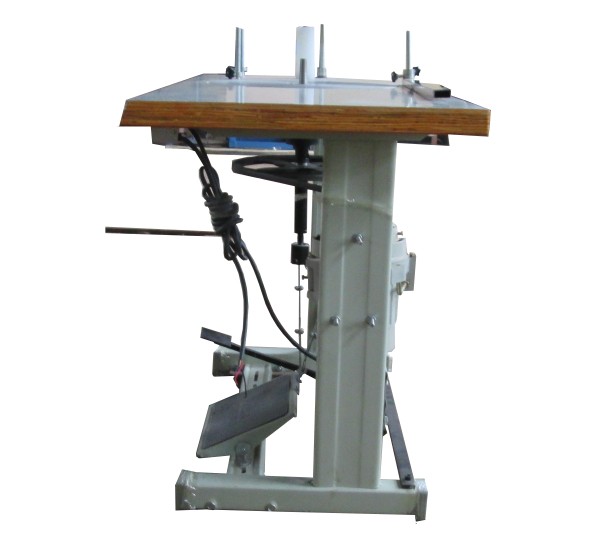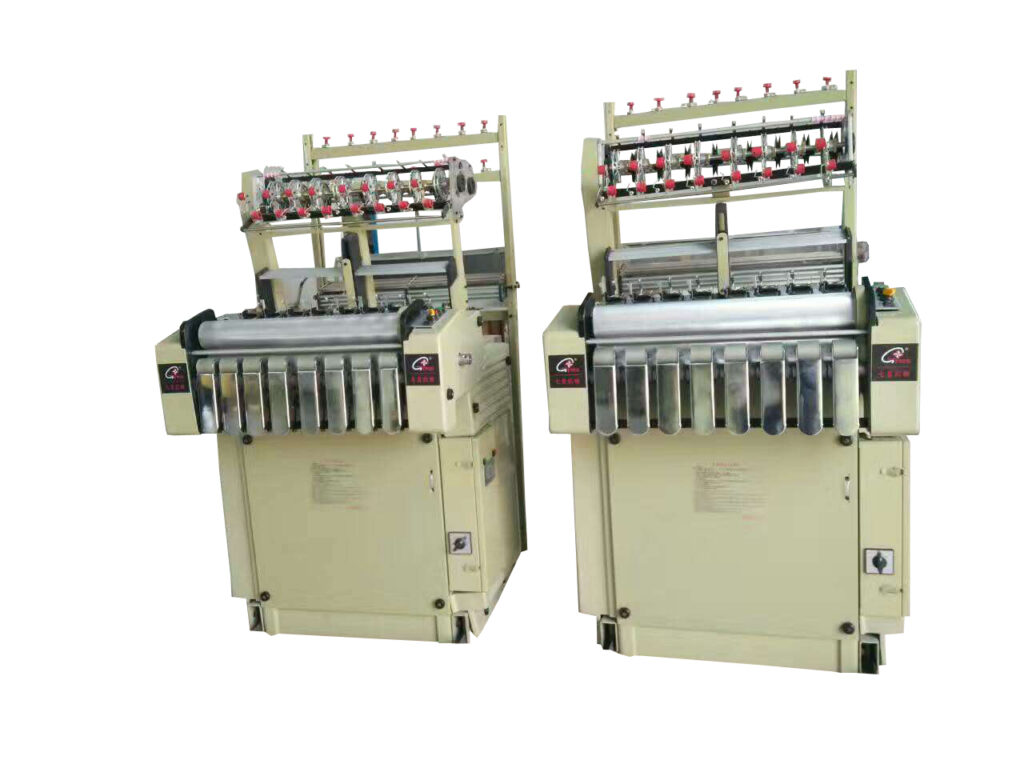The high-speed shuttleless loom is mainly composed of five mechanisms: opening mechanism, weft feeding mechanism, edge locking mechanism, weft beating mechanism, and take-up mechanism.
- Mouth mechanism: To interweave warp yarns and weft yarns into fabrics on a loom, the warp yarns must first be divided into front and back double layers to form a shed, and then the weft yarns are introduced. Therefore, the warp yarns need to be inserted into the head’s eyes according to certain rules. When the heddles move up and down along with the head frame, the warp yarns will be separated from the left and right along with the adjustment of the head frame, creating an opening for the weft yarn to penetrate. According to the structural needs of the fabric, a multi-heald frame design can be used to open the mouth (two heald frames for plain weave).
- Weft feeding mechanism: The weft feeding needs to use the weft feeding needle to introduce the weft yarn into the shed so that the weft yarn and warp yarn are interwoven into glass fiber tapes. The weft-feeding mechanism of the ribbon loom has 3 characteristics.
- The weft feeding speed is faster.
- The volume of weft yarn is large, the time spent on changing weft yarn is less, and the operating rate of machinery and equipment is high.
- Send latitude for double latitude/times.

Due to the faster weft feeding speed, in order to prevent the weft yarn from being broken due to too much-supporting force, it is necessary to use an active weft feeding device to reduce the tension of the weft yarn and ensure the normal operation of the weaving machine.
- Overlock mechanism: The fabric structure with double weft is formed by feeding weft with the weft-feeding needle. To lock the edge, there are two main ways to lock the edge.
- Use the overlock needle to hook the weft yarn, not the overlock thread. If there are fewer weft yarns in this organizational structure, the weft yarns will be loose and loose bands are prone to occur.
- Use the overlock thread to lock the edge, generally use the weft edge to lock the edge, use the hook needle to hook the overlock thread, generate an electromagnetic coil, and lock the weft yarn; the main point of action is that the hook needle first hooks the overlock thread, and then moves repeatedly to generate an electromagnetic coil and then hook the thread Then take off the circle to produce continuous border lines and lock the warp.
- Beating mechanism: Xuzhou Qixing Machinery Co., Ltd. introduces the weft yarn at the shed, and guides it to the weaving fell and interlaced with the warp yarn with the help of the beating mechanism to form a textile. The width of the fabric and the relative density of the warp yarns are determined by the reed in the beating-up mechanism. The arrangement of the weft yarns in the fabric and the buckling of the warp and weft yarns are determined by the different supporting forces and deformation levels of the warp and weft yarns during beating-up. Certainly.

- Coiler: The take-up mechanism is a device that pushes the warp yarn to shift and pulls the woven bandage away from the weaving mouth. In order to improve the actual effect of take-up, the main roller of the take-up roller generally uses a printing rubber roller. After the glass fiber tape comes out of the take-up roller, it is now Generally, there are two ways to take the wind.
- The unwound glass fiber tape is first dropped into the tape storage box, and then successfully divided into a certain length by the decompiler.
- The glass fiber tape is immediately rolled into a roll and immediately rolled into a roll during the label weaving process, which can reduce the process flow of the roll.

